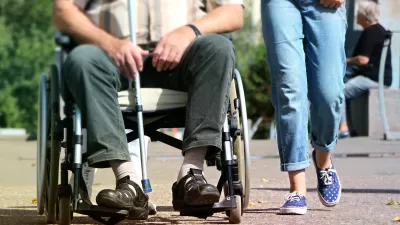The latest edition of the AARP Livability Index reveals the U.S. regions with more of the kinds of neighborhoods that offer quality of life benefits for residents of all ages.

Whitney Airgood-Obycki and Jennifer Molinsky share insights from the latest AARP Livability Index, co-authored with the Joint Center for Housing Studies of Harvard University.
"The AARP Livability Index offers a multifaceted approach to understanding what makes communities livable for people of all ages. The index is composed of seven categories: engagement, environment, health, housing, neighborhood, opportunity, and transportation. Each category includes several metrics drawn from publicly available data sources," according to the article's explanation of the Livability Index.
Among the geographic themes to emerge from the study are that the Northeast and the Midwest tend to have the most livable neighborhoods, according to Airgood-Obycki and Molinsky. More specifically: "In the Northeast region, 32 percent of neighborhoods are in the top national quintile, as are 24 percent of those in the Midwest, 20 percent in the West, and just 9 percent in the South."
"On average, block groups in the Northeast also have the highest overall livability score of 53.8, nearly 5 points higher than the average of 49.0 in the South. Northeastern communities score higher than all other regions in three categories: engagement, neighborhood, and transportation."
The article concludes with a call to action: that all neighborhoods can be livable, no matter where they are found. "The great benefit of the Index is that it enables communities to recognize the features they already have and identify areas for improvement."
FULL STORY: THE GEOGRAPHY OF LIVABILITY: INSIGHTS FROM AARP’S LIVABILITY INDEX

Maui's Vacation Rental Debate Turns Ugly
Verbal attacks, misinformation campaigns and fistfights plague a high-stakes debate to convert thousands of vacation rentals into long-term housing.

Planetizen Federal Action Tracker
A weekly monitor of how Trump’s orders and actions are impacting planners and planning in America.

In Urban Planning, AI Prompting Could be the New Design Thinking
Creativity has long been key to great urban design. What if we see AI as our new creative partner?

King County Supportive Housing Program Offers Hope for Unhoused Residents
The county is taking a ‘Housing First’ approach that prioritizes getting people into housing, then offering wraparound supportive services.

Researchers Use AI to Get Clearer Picture of US Housing
Analysts are using artificial intelligence to supercharge their research by allowing them to comb through data faster. Though these AI tools can be error prone, they save time and housing researchers are optimistic about the future.

Making Shared Micromobility More Inclusive
Cities and shared mobility system operators can do more to include people with disabilities in planning and operations, per a new report.
Urban Design for Planners 1: Software Tools
This six-course series explores essential urban design concepts using open source software and equips planners with the tools they need to participate fully in the urban design process.
Planning for Universal Design
Learn the tools for implementing Universal Design in planning regulations.
planning NEXT
Appalachian Highlands Housing Partners
Mpact (founded as Rail~Volution)
City of Camden Redevelopment Agency
City of Astoria
City of Portland
City of Laramie




























